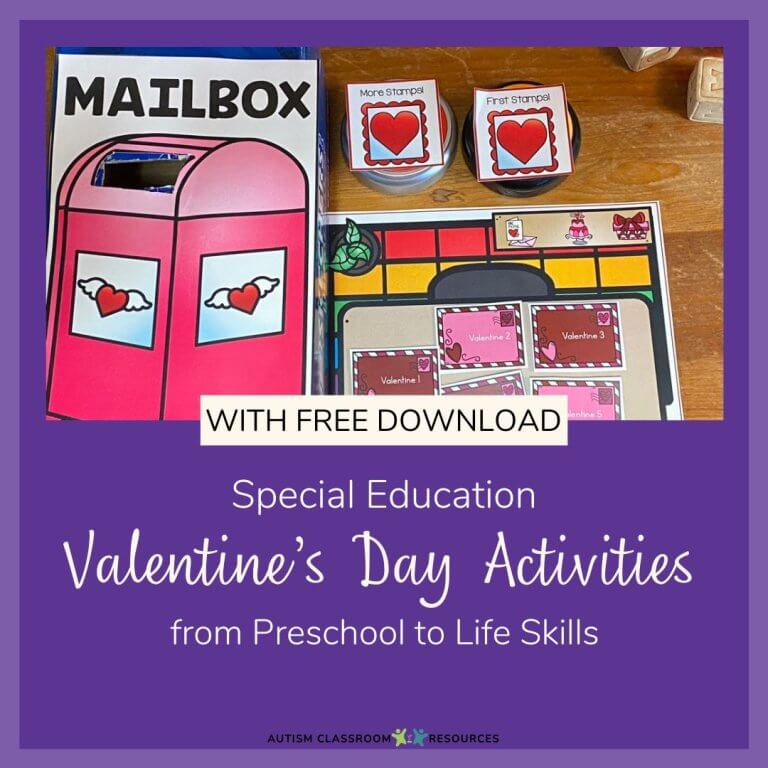Sharing is caring!
I’m back today with another post of science in the special education classroom. The next unit up is the plant life cycle. With spring finally beginning in most areas of the country and alternative standards focusing on plants, this is the perfect time of year to teach about plants and plant facts. Like my butterfly life cycle unit, this one has lots of options and work products that are already differentiate for students to demonstrate their knowledge. So I wanted to share with you what’s included in these plant life cycle activities and how I would use the different materials to meet a diverse range of needs.
And make sure you stick to the end, because I’ve got a free plant life cycle activity from this set for you!
One of the tricky parts about teaching science in a special education classroom, particularly one that includes students with developmental disabilities, is that typically it’s hard to figure out what to include and what you might be able to leave out. For instance, is it important to have all the students understand all the vocabulary of the life cycle of a plant like photosynthesis, or do you want them to have more time to experience how plants grow and adapt to changing conditions? How much time you have for this instruction plays a role as well. Often science gets taught as an afterthought to meet the alternate curriculum standards and may not be part of the everyday curriculum. Also, because it’s part of the alternate curriculum, many students have IEP goals related to the science units, so you need some way to reliably measure their mastery of the material. And finally, there is always the issue that all of the students in the classroom are significantly different in their skill level so there is a good bit of differentiation involved.
So, let’s talk about the plant life cycle activities. The plant life cycle is a fun unit to teach because it’s great for hands-on activities, the students can learn about how things grow and how we can grow the food we eat. For young student it can give them a chance to dig in the dirt, plant things, and watch them grow. For older students, it can also be incorporated into vocational skills of working in a nursery or a greenhouse. Or a leisure skill of just planting their own garden. So, if you look at it with these goals in mind, you can make some decisions based on the needs and skills of the student how important different parts of the unit are.
Hands-On Science in the Special Education Classroom
There are so many hands-on activities you can do with plants that I like to include gardening or some type in all classrooms regardless of age.
- You can work on following directions to plant seeds.
- Students whose independence skills are at the stage of put-in tasks can fill the peat pots or containers with the dirt for planting.
- Students who are working on math skills of measuring, graphing, and simple data collection can plant flowers or plants and then measure them each day or week, recording their height or how many blades of grass have grown.
- Students who are counting can plant seeds, counting how many they have planted and then counting how many turned into seedlings.
- Students who are working on understanding the scientific method can put a plant in the light and another plant in a dark place and record which grows faster. Or they can water one and not the other and compare them. This can also be worked into a writing or journaling activity.
- Students could plant a vegetable garden and harvest fast-growing vegetables, like beans and squash, and then cook them (I love cooking in the classroom) or take them home to show families.
Hands-On Science Activities from Around the Web
If you are looking for other ideas and directions, here are some science activities from around the web that might be useful.
- You can always check out my Science Pinterest Board for Ideas for supporting science in the special education classroom. Here are some links from that board that you might want to try for this unit.
- Seed Jar Science from Little Bins for Little Hands
- How Does a Leaf Breathe from KC Edventures
- Kids’ Science Sprout House from The Stem Laboratory
- And finally, check out these videos gathered by Primary Themepark
To supplement these activities and assure you are teaching the cycle of plant life, you can share information and practice sequencing the life cycle. This is great practice for students working on sequencing to tell a story as well as meeting science objectives. To that end, I created the Science in the Special Education Classroom: Plant Life Cycle Activities Unit. It provides what you need to supplement the hands-on activities to teach about the plant life cycle and facts about plants through a presentation, hands-on materials, cut-and-paste sequencing and worksheets / tests for demonstrating mastery.
Materials to Introduce the Unit and the Steps
- Slide Show / Presentation: Students are exposed to the life cycle and facts about plants in a PowerPoint you can show with a projector or on a computer. Students can also read it on a tablet.
- Interactive book (can be printed in 2 sizes).
- 20 Picture Vocabulary Cards: Photographs and words of key terms for a word wall or picture dictionary.
- Mini-Book: Black and White for students to color; Color version for teacher example
How You Can Implement the Plant Life Cycle Activities Unit in the Classroom
Clearly you can choose how to use your materials, but here are some ways I would use it and reasons I designed it the way I did.
▪ Introduce the unit with the presentation on a projector, computer or tablet. Edit the slides to remove slides you don’t need for your class (e.g., if your students don’t need to learn “germinate”).
▪ Read the interactive book to the morning meeting or during another group time. Have students find the pictures to match to the page. Review the book 2 or 3 times during the week. Alternate with the presentation as appropriate for your students.
▪ If you have a student who needs to hold his/her own book with pieces, print out the smaller version of the book to read during the group.
▪ During art or small group instruction have the students color the mini-books. Again customize them by removing pages you don’t need your students to review.
▪ While reviewing the mini-books, slideshow or interactive books, have students go to the word wall or word ring for the picture cards to find the vocabulary words. Have them identify them in the presentation or books with a definition.
Work Product / Documentation
Data on a daily basis is hard enough for all the other skills the student is learning, so I made this unit to create work products you can grade or assess to provide proof of students’ mastery of the material.
Included for doing this are:
- Sequencing Sheets: 18 versions for students to sequence the life cycle of plants including one you can laminate with color pictures, a black and white version for cut and paste and versions students write on with and without pictures. Includes general life cycle, bean life cycle, sunflower life cycle, and apple life cycle.
- 3 Worksheets – Tests: Versions with symbols to assist in reading, with symbols for answering or simply written and fill-in-the blank for students who can read and write more successfully.
The Way I Would Use Them
▪ Have the students practice with the various life cycles for general plants, sunflower, beans, and apples. Each life cycle cut and paste activity is offered in black and white and color.
▪ Students working on the basic level can do the general, sunflower, and apple tree cycles with 4 steps. More advanced students can do the 9 steps of the sunflower or bean life cycle.
▪ Have the students answer the questions on the worksheets or tests. There are symbol supported options and written options.
▪ Have advanced students write the steps of the life cycle with graphic organizers.
▪ Use the written work to provide permanent product for meeting curriculum goals.
I’ve tried to give you everything you need, other than the hands-on experiments, to learn about the life cycle of plants and then demonstrate the knowledge and mastery of the concepts. You can check the unit with plant life cycle activities out in my TPT Store by clicking the picture below. If you have science you units you would like me to create materials for, let me know. Happy Spring!

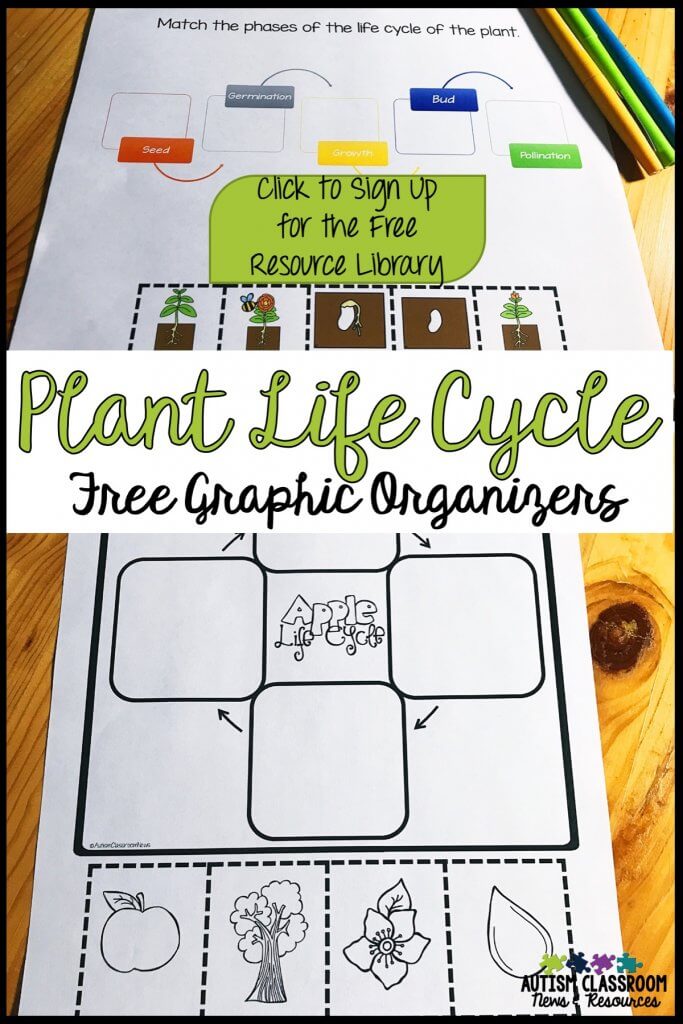

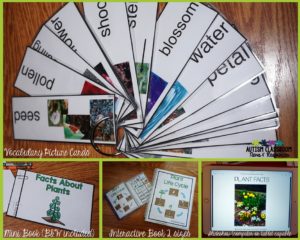

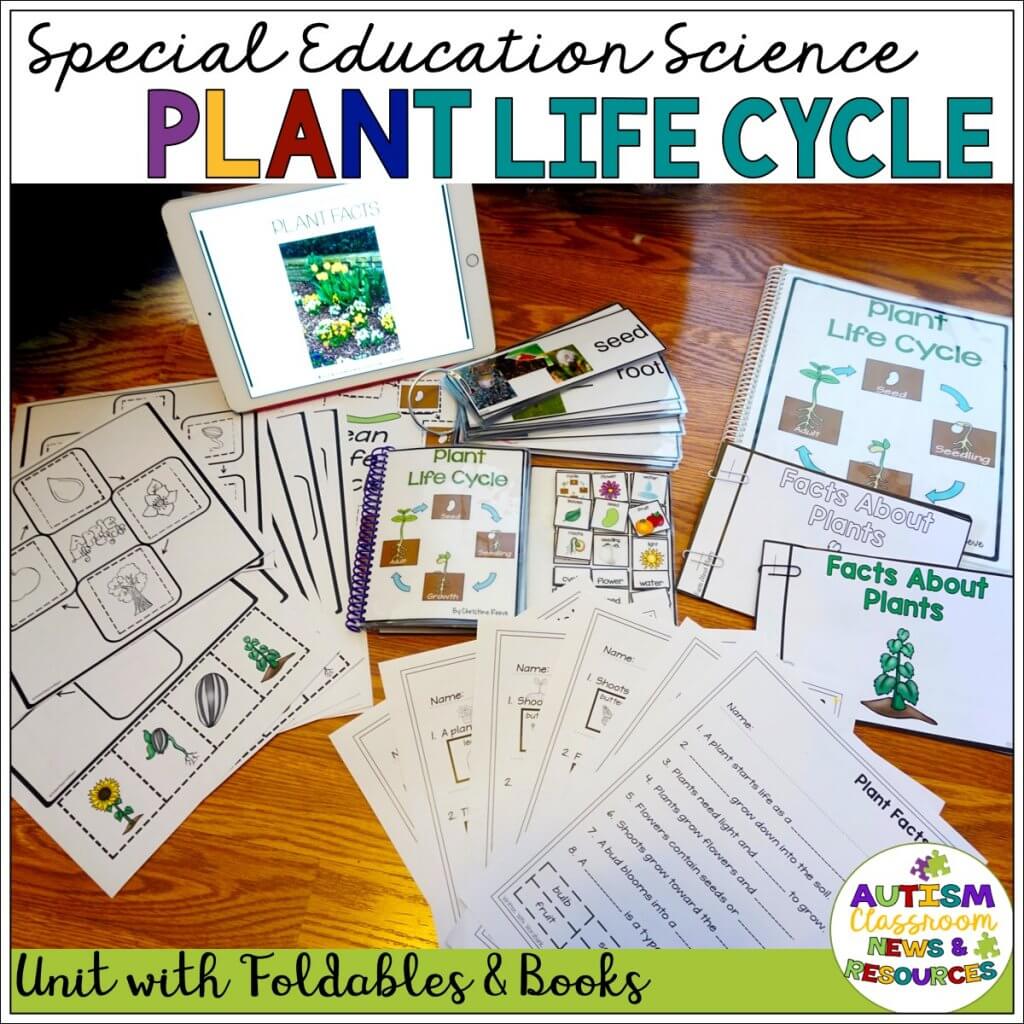
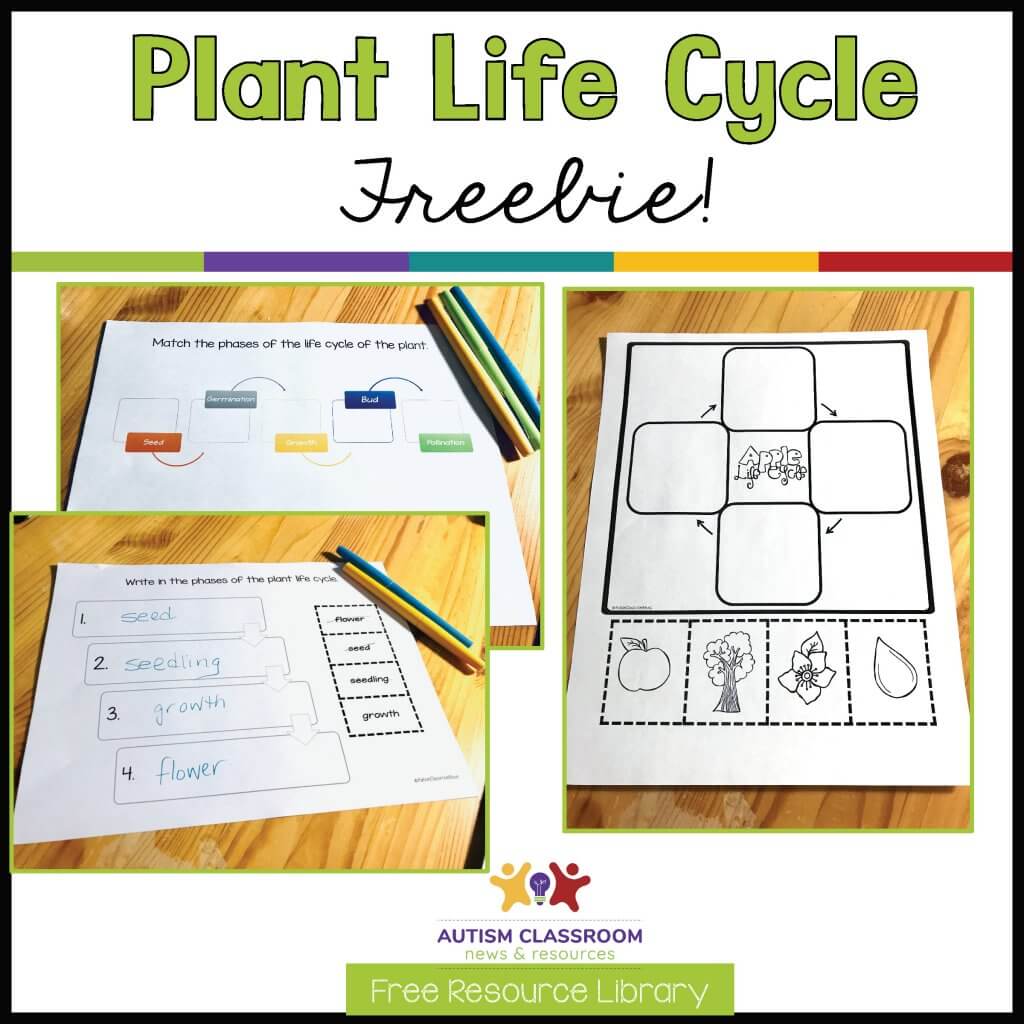
![Summer resources to help survive the end of the year in special education [picture-interactive books with summer themes]](https://autismclassroomresources.com/wp-content/uploads/2018/05/SUMMER-RESOURCES-ROUNDUP-FEATURE-8528-768x768.jpg)


